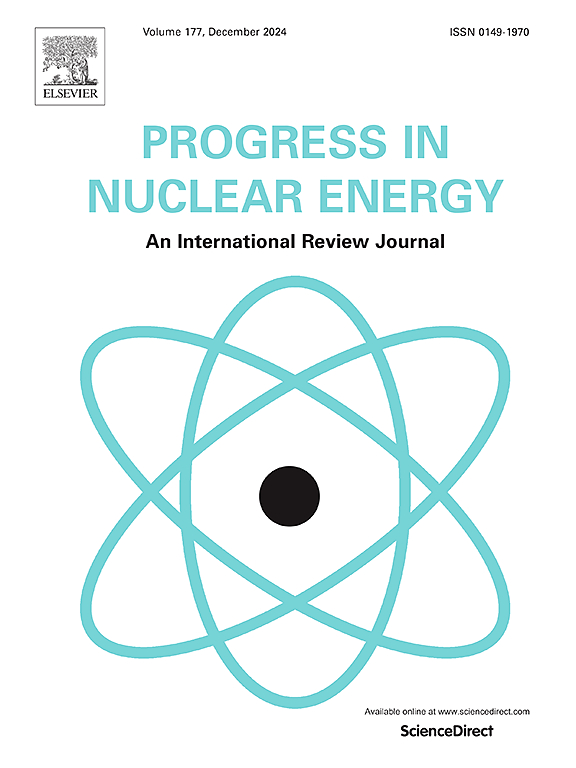Anti-carburization strategies for superalloys Inconel 617 and Incoloy 800H during service in VHTR coolant: Pre-oxidation and continuous oxidation
IF 3.3
3区 工程技术
Q1 NUCLEAR SCIENCE & TECHNOLOGY
引用次数: 0
Abstract
This study investigates the effects of pre-oxidation and continuous oxidation on the corrosion behavior and plasticity of Inconel 617 and Incoloy 800H in a helium atmosphere containing 400 ppm methane at 950 °C. The results show that, without protective measures, both Inconel 617 and Incoloy 800H experienced severe internal carburization, leading to a significant reduction in plasticity (617: 44%→21%, 800H: 42%→21.7%). After pre-oxidation in air at 950 °C for 10 h, a Cr-oxide layer formed on both alloys. However, the oxide layer was porous and failed to effectively prevent internal carburization. Furthermore, the oxide layer promoted the initiation and propagation of surface cracks, further reducing alloy plasticity (617: 44%→2.3%, 800H: 42%→18.3%). Continuous oxidation (introducing 200 ppm O₂ in helium) effectively mitigates the issue of reduced plasticity in the alloy (617: 44%→39.2%, 800H: 42%→40.7%). This is because continuous oxidation promotes the formation of a denser oxide layer, which hinders the inward diffusion of carbon atoms. Additionally, the SiO2 generated during continuous oxidation reduces the adhesion between the oxide layer and the substrate, preventing the alloy matrix from being affected by crack propagation in the oxide layer during plastic deformation. In conclusion, continuous oxidation is an effective strategy for preventing carburization of alloys in VHTR environments.
求助全文
约1分钟内获得全文
求助全文
来源期刊

Progress in Nuclear Energy
工程技术-核科学技术
CiteScore
5.30
自引率
14.80%
发文量
331
审稿时长
3.5 months
期刊介绍:
Progress in Nuclear Energy is an international review journal covering all aspects of nuclear science and engineering. In keeping with the maturity of nuclear power, articles on safety, siting and environmental problems are encouraged, as are those associated with economics and fuel management. However, basic physics and engineering will remain an important aspect of the editorial policy. Articles published are either of a review nature or present new material in more depth. They are aimed at researchers and technically-oriented managers working in the nuclear energy field.
Please note the following:
1) PNE seeks high quality research papers which are medium to long in length. Short research papers should be submitted to the journal Annals in Nuclear Energy.
2) PNE reserves the right to reject papers which are based solely on routine application of computer codes used to produce reactor designs or explain existing reactor phenomena. Such papers, although worthy, are best left as laboratory reports whereas Progress in Nuclear Energy seeks papers of originality, which are archival in nature, in the fields of mathematical and experimental nuclear technology, including fission, fusion (blanket physics, radiation damage), safety, materials aspects, economics, etc.
3) Review papers, which may occasionally be invited, are particularly sought by the journal in these fields.
 求助内容:
求助内容: 应助结果提醒方式:
应助结果提醒方式:


